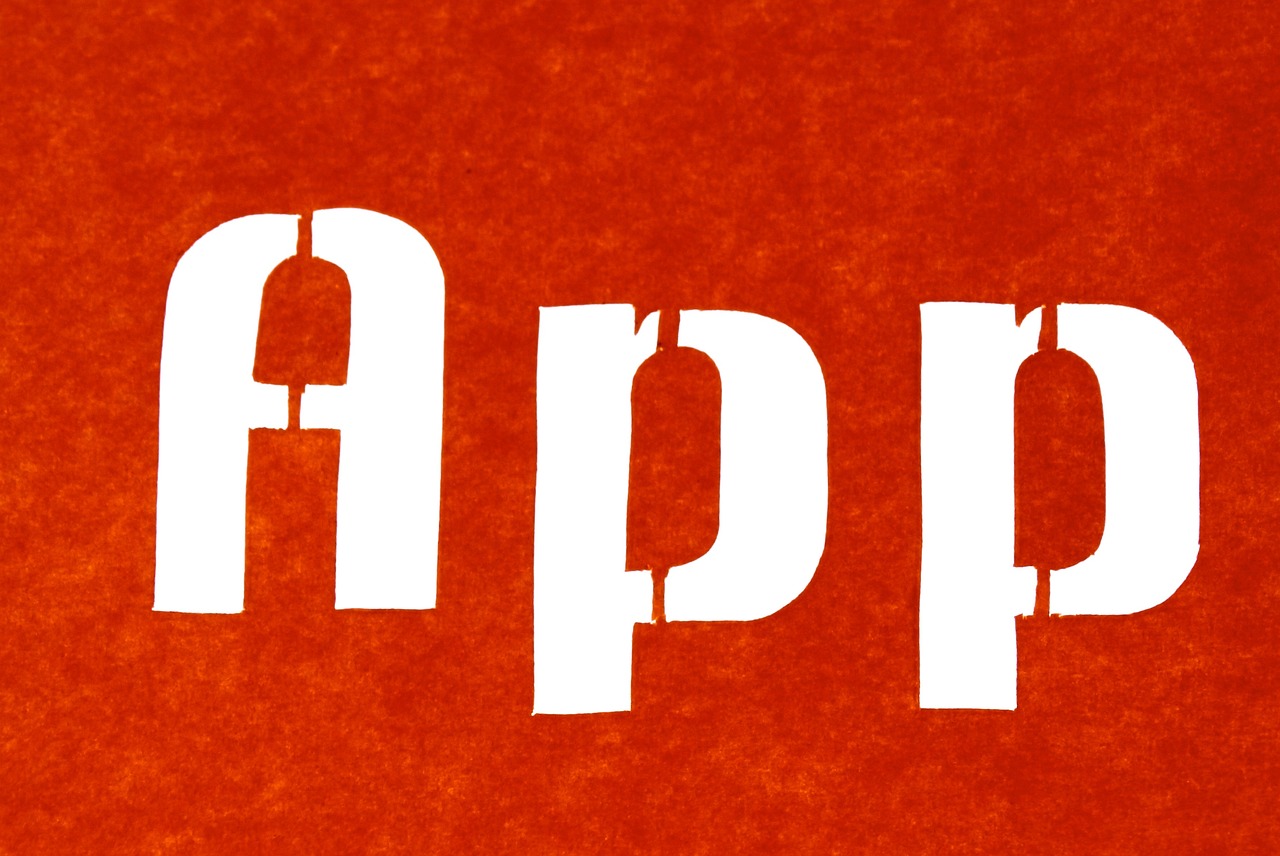How to Find the Best Quilting Software
Finding the best quilting software can feel like searching for a needle in a haystack, especially with so many options available on the market today. Whether you're a seasoned quilter or a beginner just dipping your toes into the world of quilting, the right software can make a world of difference in your creative process. But where do you even start? First, it’s essential to understand that not all quilting software is created equal. Each program comes with its unique set of features, capabilities, and user experiences that cater to different quilting styles and needs.
As you embark on this journey, think about what you truly want to achieve with your quilting projects. Are you looking for something that helps you design intricate patterns, or do you need a tool that can assist you in managing your quilting projects from start to finish? Perhaps you're interested in software that offers tutorials and educational resources to enhance your skills. Knowing your specific goals will help you narrow down your options and make a more informed decision.
In addition to understanding your personal quilting needs, it’s also important to consider factors such as the user interface, customization options, and compatibility with your devices. A user-friendly interface can greatly enhance your experience, especially if you’re new to quilting software. Imagine trying to navigate a complicated program when all you want to do is create beautiful quilts—frustrating, right? Furthermore, the ability to customize templates and designs allows you to infuse your personality into your projects, making each quilt uniquely yours.
Lastly, don't overlook the importance of community and support. Access to helpful resources and an active online community can provide invaluable assistance as you navigate your quilting journey. With the right software by your side, you'll be able to unleash your creativity and bring your quilting visions to life. So, let’s dive deeper into the essential factors to consider when selecting the best quilting software for you!

Understanding Your Quilting Needs
This article explores essential factors to consider when selecting quilting software, including features, user reviews, and compatibility, to help quilters of all levels make informed decisions.
Before diving into the world of quilting software, it's crucial to assess your specific quilting needs. Are you a beginner looking to design simple patterns, or are you an experienced quilter aiming to manage complex projects? Understanding your goals can help you choose software that aligns with your quilting style. For instance, if you primarily want to create intricate designs, you might need software with advanced design tools. On the other hand, if you’re more into project management, software that includes tracking features might be more beneficial.
Consider the following aspects when evaluating your needs:
- Designing Patterns: If your focus is on creating unique quilt patterns, look for software with a variety of design tools and templates.
- Project Management: For those who juggle multiple projects, software that allows you to track progress and manage deadlines can be invaluable.
- Skill Enhancement: If you aim to improve your quilting skills, choose software that offers tutorials and learning resources.
Additionally, think about the type of quilting you enjoy. Are you into traditional quilting, modern styles, or perhaps a mix of both? This can influence your software choice significantly. Some programs cater specifically to traditional quilters, while others are tailored for modern designs. Understanding your quilting preferences will not only help you choose the right tools but also enhance your overall quilting experience.
Moreover, consider the learning curve associated with the software. If you’re new to quilting or technology, you might want to opt for programs that are easier to navigate and come with extensive tutorials. Remember, the goal is to enjoy the process, not to feel overwhelmed by complicated features!
In conclusion, taking the time to understand your quilting needs is a vital step in selecting the best software. By identifying what you want to achieve, you can make an informed decision that will enhance your quilting journey and allow you to express your creativity to the fullest.
Identifying essential features such as design tools, templates, and tutorials can significantly impact your quilting experience and help you choose the right software.
A user-friendly interface is vital for seamless navigation and ease of use, especially for beginners who may feel overwhelmed by complex software.
The ability to customize templates and designs allows quilters to express their creativity and tailor projects to their personal style.
Ensuring the software is compatible with your devices, whether PC, Mac, or tablet, is essential for a smooth quilting experience.
Access to customer support and an active online community can provide valuable resources, troubleshooting assistance, and inspiration for your quilting journey.
User reviews offer insights into real-world experiences, helping you gauge the effectiveness and reliability of the quilting software you're considering.
Understanding common complaints can help you avoid software that may not meet your expectations or needs.
Positive user experiences can guide you toward software that excels in functionality and user satisfaction, making your quilting projects more enjoyable.
Determining your budget is essential, as quilting software can vary widely in price, from free options to premium tools with advanced features.
Evaluating the pros and cons of free versus paid software can help you make an informed decision based on your quilting goals and financial situation.
Many software providers offer trial versions or subscription plans, allowing you to test features before committing to a purchase, ensuring you find the best fit for your needs.
Q: What should I prioritize when choosing quilting software?
A: Focus on your specific needs, such as design capabilities, project management features, and ease of use.
Q: Is free quilting software worth it?
A: Free software can be a great starting point, but it may lack advanced features found in paid versions. Evaluate based on your quilting goals.
Q: How can I find user reviews for quilting software?
A: Check online forums, quilting blogs, and software review sites to gather insights from real users.
Q: Are there any quilting software options that offer a trial period?
A: Yes, many providers offer trial versions, allowing you to test the software before making a purchase.

Key Features to Look For
When diving into the world of quilting software, it's essential to understand that not all programs are created equal. The right features can make your quilting experience not just easier, but also more enjoyable and creative. So, what should you be looking for? Let’s break it down together!
First off, design tools are a must-have. These tools allow you to create intricate patterns and layouts that reflect your unique style. Imagine being able to visualize your quilt before you even cut a single piece of fabric! Many quilting software options come equipped with a variety of design tools, such as:
- Drag-and-drop functionality for easy pattern creation.
- A library of templates to jump-start your projects.
- Color palettes that let you experiment with different fabric choices.
Another crucial feature to consider is the availability of tutorials and resources. Whether you're a seasoned pro or a complete newbie, having access to step-by-step guides can be incredibly beneficial. It’s like having a personal quilting coach right at your fingertips! Look for software that offers:
- Video tutorials to visually guide you through the process.
- Written guides that you can refer back to at any time.
- Community forums where you can ask questions and share tips.
Now, let’s talk about the user interface. A user-friendly interface can make or break your experience, especially if you’re just starting out. You want something that feels intuitive and doesn’t overwhelm you with options. Think of it like a well-organized sewing room—everything should be easy to find and accessible. When exploring software, consider how easy it is to navigate through the menus and features. A clean layout can save you a ton of frustration!
Additionally, customization options are a game-changer. The ability to tweak templates and designs means you can truly express your creativity. It's like having a blank canvas where your imagination can run wild! Look for software that allows you to:
- Modify existing patterns to suit your taste.
- Create your own templates from scratch.
- Save your designs for future projects.
Lastly, we can’t overlook compatibility with devices. You want to ensure that the software works seamlessly with your computer or tablet. After all, the last thing you want is to invest time in learning a program only to find out it doesn’t work on your device. Check if the software is available for:
| Device Type | Compatibility |
|---|---|
| PC | Yes/No |
| Mac | Yes/No |
| Tablet | Yes/No |
In summary, choosing the right quilting software involves understanding what features are most important to you. With the right tools at your disposal, you can transform your quilting journey into an exciting and fulfilling adventure. So, take your time exploring your options and remember, the perfect software is out there waiting for you!
Q: What is the best quilting software for beginners?
A: For beginners, look for software with a user-friendly interface and plenty of tutorials. Programs like EQ Mini or Quilt Pro are great starting points.
Q: Can I use quilting software on a tablet?
A: Yes, many quilting software options are compatible with tablets. Just ensure to check the specifications before purchasing.
Q: Are there free quilting software options available?
A: Absolutely! There are several free options, but they may have limited features compared to paid versions. It's wise to try a few to see which fits your needs best.
Q: How can I find user reviews for quilting software?
A: You can find user reviews on quilting forums, software review sites, and social media groups dedicated to quilting enthusiasts.

User-Friendly Interface
When diving into the world of quilting software, one of the most critical aspects to consider is the . Imagine sitting down to create your masterpiece, only to be greeted by a maze of complicated menus and buttons that leave you feeling more confused than inspired. A well-designed interface can be the difference between a joyful quilting experience and a frustrating one. A user-friendly interface not only simplifies navigation but also enhances your overall productivity, allowing you to focus on what you love most—quilting!
For beginners, a clear and intuitive layout is essential. You want to be able to find the tools you need without feeling overwhelmed. Look for software that features:
- Intuitive Navigation: Menus and icons should be easy to understand, guiding you through the design process effortlessly.
- Helpful Tooltips: Contextual hints and tips can provide guidance as you navigate through various features, helping you learn as you go.
- Customizable Workspace: The ability to rearrange tools and panels to suit your workflow can make a significant difference in your comfort level.
Furthermore, consider the availability of tutorials or onboarding processes that can help you get acquainted with the software quickly. Many top-rated quilting programs offer a guided setup or interactive tutorials that walk you through the basic features, ensuring that you don’t feel lost right from the start.
Ultimately, the goal is to find software that feels like an extension of your creativity rather than a barrier to it. With a user-friendly interface, you'll be able to channel your energy into designing beautiful quilts instead of wrestling with the software itself. So, before you make a purchase, take the time to explore demos or trial versions, as they can provide a sneak peek into how easily you can navigate the program. Remember, a smooth start can lead to a fulfilling quilting journey!

Customization Options
When it comes to quilting, one of the most exciting aspects is the ability to express your creativity through unique designs. This is where in quilting software play a significant role. Imagine being able to take a basic quilt pattern and tweak it to reflect your personal style or the theme of your project. The best quilting software provides a plethora of customization features that allow you to do just that.
First and foremost, look for software that offers a variety of template options. These templates can serve as a foundation for your project, giving you a starting point while still allowing for adjustments. You should be able to alter colors, shapes, and sizes to fit your vision. Some software even lets you create your own templates from scratch, which is perfect for those who want to push the boundaries of traditional quilting.
Additionally, many quilting programs include design tools that enable you to manipulate elements within your quilt. You might find features such as:
- Drag-and-drop functionality for easy placement of design elements.
- Layering options that allow you to see how different fabrics and patterns interact.
- Color palettes that let you experiment with different color schemes before you even pick up a fabric swatch.
Furthermore, consider software that allows for font customization. Many quilters like to add personal messages or names to their quilts, and having a variety of fonts to choose from can make your project even more special. Whether you prefer a classic script or a bold modern typeface, the right software can help you find the perfect fit.
Lastly, don’t overlook the importance of user tutorials on customization features. A good quilting software will not only provide the tools but also offer guidance on how to use them effectively. This can be a game-changer for beginners who may feel intimidated by the creative possibilities. Tutorials can help you navigate through the customization options, ensuring that you maximize your software's potential and truly make your project your own.
In summary, the customization options available in quilting software can significantly enhance your quilting experience. By enabling you to tailor designs to your liking, these features not only inspire creativity but also transform a simple quilt into a cherished masterpiece. So, as you explore various software options, keep an eye out for these essential customization tools that will allow your unique quilting style to shine.
- What are the benefits of customization in quilting software?
Customization allows quilters to personalize their projects, making each quilt unique and tailored to their style. - Can I create my own templates?
Many quilting software programs offer the ability to create custom templates, giving you complete control over your designs. - Are there tutorials available for using customization features?
Yes, most reputable quilting software includes tutorials to help users effectively utilize customization options.

Compatibility with Devices
This article explores essential factors to consider when selecting quilting software, including features, user reviews, and compatibility, to help quilters of all levels make informed decisions.
Before selecting software, it's crucial to assess your specific quilting needs, whether for designing patterns, managing projects, or enhancing your quilting skills.
Identifying essential features such as design tools, templates, and tutorials can significantly impact your quilting experience and help you choose the right software.
A user-friendly interface is vital for seamless navigation and ease of use, especially for beginners who may feel overwhelmed by complex software.
The ability to customize templates and designs allows quilters to express their creativity and tailor projects to their personal style.
When diving into the world of quilting software, one of the most important factors to consider is . After all, what's the point of investing in a fantastic quilting tool if it doesn't work on your device? Whether you're using a PC, Mac, or tablet, ensuring that the software you choose is compatible can save you a lot of headaches down the line. Imagine trying to run a software program that simply won’t open on your system—frustrating, right?
Most quilting software today is designed to be versatile, but it’s always a good idea to double-check. Here are a few points to consider:
- Operating System: Check if the software is available for Windows, macOS, or Linux. Some programs might only cater to one operating system.
- Device Type: Ensure the software works well on desktops and laptops, and see if there's a mobile version or app available for tablets and smartphones.
- Hardware Requirements: Look into the minimum hardware specifications needed to run the software smoothly. This includes RAM, processor speed, and available disk space.
By taking these factors into account, you can ensure that your quilting experience is not just enjoyable but also seamless. Don't let technical issues get in the way of your creativity!
Access to customer support and an active online community can provide valuable resources, troubleshooting assistance, and inspiration for your quilting journey.
User reviews offer insights into real-world experiences, helping you gauge the effectiveness and reliability of the quilting software you're considering.
Understanding common complaints can help you avoid software that may not meet your expectations or needs.
Positive user experiences can guide you toward software that excels in functionality and user satisfaction, making your quilting projects more enjoyable.
Determining your budget is essential, as quilting software can vary widely in price, from free options to premium tools with advanced features.
Evaluating the pros and cons of free versus paid software can help you make an informed decision based on your quilting goals and financial situation.
Many software providers offer trial versions or subscription plans, allowing you to test features before committing to a purchase, ensuring you find the best fit for your needs.
Q1: Can I use quilting software on multiple devices?
A1: It depends on the software. Some programs allow installation on multiple devices, while others may require a separate purchase for each device.
Q2: Is there quilting software that is good for beginners?
A2: Yes, many quilting software options are designed specifically for beginners, featuring user-friendly interfaces and plenty of tutorials.
Q3: Are there free quilting software options available?
A3: Absolutely! There are several free quilting software options, though they may have limited features compared to paid versions.
Q4: How do I know if the software is compatible with my device?
A4: Check the software's official website for system requirements and compatibility information before purchasing.

Support and Community
This article explores essential factors to consider when selecting quilting software, including features, user reviews, and compatibility, to help quilters of all levels make informed decisions.
Before selecting software, it's crucial to assess your specific quilting needs, whether for designing patterns, managing projects, or enhancing your quilting skills.
Identifying essential features such as design tools, templates, and tutorials can significantly impact your quilting experience and help you choose the right software.
A user-friendly interface is vital for seamless navigation and ease of use, especially for beginners who may feel overwhelmed by complex software.
The ability to customize templates and designs allows quilters to express their creativity and tailor projects to their personal style.
Ensuring the software is compatible with your devices, whether PC, Mac, or tablet, is essential for a smooth quilting experience.
Finding the right quilting software isn't just about the features; it's also about the support and community that comes with it. Imagine having a group of passionate quilters at your fingertips, ready to share tips, troubleshoot issues, and inspire your next project. A strong community can transform your quilting journey from a solitary activity into a vibrant experience filled with shared knowledge and creativity.
When evaluating quilting software, look for platforms that offer robust customer support. This can include:
- Email Support: Quick responses to your queries.
- Live Chat: Real-time assistance for urgent problems.
- Comprehensive FAQs: A detailed repository of common questions and solutions.
In addition to customer support, an active online community can be a treasure trove of resources. Many software providers host forums or social media groups where users can connect. Here, you can:
- Share your projects: Get feedback and encouragement from fellow quilters.
- Participate in challenges: Test your skills and learn new techniques.
- Access tutorials: Benefit from user-generated content that can enhance your skills.
Ultimately, having access to both customer support and a community means you won't be alone on your quilting journey. You'll have a safety net to catch you if you fall and a cheerleading squad to celebrate your successes!
User reviews offer insights into real-world experiences, helping you gauge the effectiveness and reliability of the quilting software you're considering.
Understanding common complaints can help you avoid software that may not meet your expectations or needs.
Positive user experiences can guide you toward software that excels in functionality and user satisfaction, making your quilting projects more enjoyable.
Determining your budget is essential, as quilting software can vary widely in price, from free options to premium tools with advanced features.
Evaluating the pros and cons of free versus paid software can help you make an informed decision based on your quilting goals and financial situation.
Many software providers offer trial versions or subscription plans, allowing you to test features before committing to a purchase, ensuring you find the best fit for your needs.
1. What should I look for in quilting software?
You should consider features like design tools, user interface, customization options, and support community.
2. Is free quilting software worth it?
Free software can be a great starting point, but it may lack advanced features found in paid options. It's best to evaluate your needs.
3. Can I use quilting software on multiple devices?
Check the software specifications; many programs are compatible with various devices, including PCs, Macs, and tablets.
4. How can I find a supportive quilting community?
Look for software that offers forums, social media groups, or local quilting clubs to connect with other quilters.

Reading User Reviews
When it comes to choosing the right quilting software, user reviews are invaluable. They provide a window into the experiences of other quilters who have walked the path before you. Imagine standing in a quilt shop, surrounded by vibrant fabrics and intricate patterns, but instead of feeling overwhelmed, you have a friend guiding you through the choices. That's what user reviews can do for you—they offer insights that can help you navigate the often complex world of quilting software.
One of the first things to consider is the effectiveness of the software. Are users finding it easy to create beautiful designs? Are they able to manage their quilting projects efficiently? By reading through reviews, you can gauge whether the software lives up to its promises. Look for comments that highlight specific features, as these can give you a clearer picture of what to expect. For instance, a user might rave about the intuitive design tools or the extensive library of templates available, which can be a game-changer for your quilting projects.
However, it’s not just the glowing reviews that deserve your attention. Understanding common complaints can save you from potential headaches down the line. For example, if multiple users mention that the software crashes frequently or is difficult to navigate, it’s a red flag. You wouldn’t want to invest time and money into a tool that might frustrate you. Here are a few common complaints to watch for:
- Frequent software updates that disrupt workflow.
- Lack of customer support when issues arise.
- Compatibility problems with various devices.
On the flip side, highlighting positive experiences can lead you to software that truly enhances your quilting journey. Enthusiastic users often share their success stories, which can inspire you to try out new features or techniques. Look for reviews that discuss how the software has helped users improve their skills or complete projects more efficiently. A review that mentions a user creating a stunning quilt in record time is certainly worth noting!
In addition to individual reviews, consider the overall ratings of the software. Many platforms aggregate user feedback into a star rating system, which can be a quick way to assess the software's popularity and reliability. However, don't let a single low rating deter you if the majority of users are satisfied. Instead, read the comments to understand the context behind the rating.
Finally, remember that user reviews are just one piece of the puzzle. Combine this information with your own research and needs to make a well-rounded decision. After all, finding the best quilting software is about more than just features—it's about what will work best for you and your unique quilting style.

Identifying Common Complaints
This article explores essential factors to consider when selecting quilting software, including features, user reviews, and compatibility, to help quilters of all levels make informed decisions.
Before selecting software, it's crucial to assess your specific quilting needs, whether for designing patterns, managing projects, or enhancing your quilting skills.
Identifying essential features such as design tools, templates, and tutorials can significantly impact your quilting experience and help you choose the right software.
A user-friendly interface is vital for seamless navigation and ease of use, especially for beginners who may feel overwhelmed by complex software.
The ability to customize templates and designs allows quilters to express their creativity and tailor projects to their personal style.
Ensuring the software is compatible with your devices, whether PC, Mac, or tablet, is essential for a smooth quilting experience.
Access to customer support and an active online community can provide valuable resources, troubleshooting assistance, and inspiration for your quilting journey.
User reviews offer insights into real-world experiences, helping you gauge the effectiveness and reliability of the quilting software you're considering.
When diving into the world of quilting software, it's essential to keep an ear to the ground regarding user feedback. Many quilters share their experiences online, and identifying common complaints can save you from potential headaches. For instance, some users frequently mention issues related to usability. They may find certain software too complicated or cluttered, leading to frustration rather than creativity. This is particularly true for beginners who might feel lost in a sea of features.
Another common complaint revolves around customer support. Users often express dissatisfaction with slow response times or inadequate help when they encounter problems. Imagine spending hours on a project only to hit a snag, and when you reach out for help, you feel like you're talking to a brick wall. That can be disheartening!
Additionally, many quilters highlight software bugs that disrupt their workflow. These can range from minor glitches to significant crashes that result in lost work. It's like running a marathon only to trip over a pebble and fall flat on your face. Therefore, when researching software, pay attention to these recurring themes in user reviews. They can give you a clearer picture of what to expect.
Positive user experiences can guide you toward software that excels in functionality and user satisfaction, making your quilting projects more enjoyable.
Determining your budget is essential, as quilting software can vary widely in price, from free options to premium tools with advanced features.
Evaluating the pros and cons of free versus paid software can help you make an informed decision based on your quilting goals and financial situation.
Many software providers offer trial versions or subscription plans, allowing you to test features before committing to a purchase, ensuring you find the best fit for your needs.
- What is the best quilting software for beginners?
Many beginners find software with intuitive interfaces and plenty of tutorials helpful. Look for options that offer a free trial to see if it suits your needs.
- Are there free quilting software options available?
Yes, there are several free quilting software options, but they may come with limitations in features compared to paid versions. It's worth trying them out to see if they meet your needs.
- How important is customer support for quilting software?
Customer support can be crucial, especially when you're new to quilting software. Good support can help you resolve issues quickly and keep your projects on track.

Highlighting Positive Experiences
When it comes to choosing the right quilting software, the experiences of other users can be a goldmine of information. Many quilters have shared their journeys, and these stories often highlight the strengths of different software options. For instance, some users rave about how a particular program transformed their quilting process, making it not only easier but also more enjoyable. Imagine sitting down to quilt, and instead of feeling overwhelmed by a confusing interface, you’re greeted by a friendly dashboard that feels like a warm hug! This is the kind of positive experience that can make all the difference.
One common theme in user reviews is the joy of discovering intuitive design tools that allow for creativity to flourish. Many quilters express their excitement about the variety of templates available, which can spark inspiration for new projects. Users often mention that they were able to create intricate designs with just a few clicks, which is a huge win for anyone who has ever struggled with more traditional methods. The satisfaction of seeing a beautiful quilt pattern come to life on screen before even touching fabric is a game-changer.
Moreover, the sense of community that some software platforms foster is another highlight worth mentioning. Many quilters have found that being part of an online forum or group associated with their software has led to lasting friendships and invaluable support. For example, users frequently share tips, tricks, and project ideas, creating a vibrant ecosystem of creativity. This not only enhances their skills but also provides a sense of belonging. As one user put it, “It feels like I’m part of a big quilting family!”
In terms of functionality, positive feedback often centers around how certain software integrates smoothly with various devices. Users appreciate being able to access their projects from their laptops, tablets, or even smartphones, allowing for flexibility in their quilting adventures. Imagine being on the go and needing to tweak a design while waiting for an appointment—having that capability is a lifesaver!
To summarize, positive user experiences can serve as a guiding light when navigating the sea of quilting software options. They not only provide insights into the effectiveness of the tools available but also highlight the joy and community that quilting can bring. Ultimately, these stories can inspire you to choose software that not only meets your needs but also enhances your quilting journey in ways you might not have imagined.
- What should I consider when choosing quilting software?
Look for features that match your quilting needs, such as design tools and tutorials, and ensure the software is user-friendly. - Are there free quilting software options available?
Yes, there are free options, but they may have limitations compared to paid software. Evaluate what works best for your quilting goals. - Can I try software before I buy it?
Many software providers offer trial versions or subscriptions, allowing you to test features before making a commitment.

Budget Considerations
When it comes to selecting the perfect quilting software, your budget plays a pivotal role in your decision-making process. It's essential to determine how much you're willing to spend before diving into the vast ocean of options available. Just like choosing the right fabric for your quilt, selecting software that fits your budget can make a significant difference in your quilting experience. So, how do you navigate this financial landscape? Let's break it down!
Quilting software can vary widely in price, ranging from free options that offer basic functionalities to premium tools that come packed with advanced features. Understanding the differences between these options is crucial. For instance, free software might be great for beginners who are just dipping their toes into the quilting world, but may lack the robust features that seasoned quilters crave. On the other hand, premium software could provide extensive design tools, templates, and tutorials that can significantly enhance your quilting projects, but they often come with a higher price tag.
Here’s a quick breakdown of what you might expect in terms of pricing:
| Type of Software | Price Range | Typical Features |
|---|---|---|
| Free Software | $0 | Basic design tools, limited templates, minimal support |
| Paid Software | $30 - $300+ | Advanced design tools, extensive templates, customer support, tutorials |
But wait! Before you pull out your credit card, consider exploring trial versions or subscription plans. Many software providers offer these options, allowing you to test out the features and functionalities before making a financial commitment. This approach not only helps you avoid buyer's remorse but also ensures that the software you choose aligns with your quilting goals. Think of it like trying on a quilt before you decide to buy it; you want to ensure it fits just right!
In addition to trial versions, keep an eye out for special promotions or discounts, especially during holiday seasons or quilting expos. These opportunities can allow you to snag premium software at a fraction of the regular price. Remember, investing in quality software can elevate your quilting experience, but it’s important to find a balance between functionality and affordability.
Ultimately, your budget should reflect your quilting aspirations. Are you a hobbyist looking to dabble in design, or are you a seasoned quilter aiming to create intricate patterns? Your answer will guide you in selecting software that not only fits your financial plan but also meets your creative needs.
- What is the best free quilting software? There are several options available, such as QuiltAssistant and Electric Quilt 8's free trial. Each has unique features to explore.
- Is it worth paying for quilting software? If you're serious about quilting and need advanced features, investing in paid software can greatly enhance your creative process.
- Can I use quilting software on multiple devices? It depends on the software. Always check compatibility with your devices before purchasing.

Free vs. Paid Software
When it comes to choosing between free and paid quilting software, it's essential to weigh the pros and cons of each option. Free software can be an excellent starting point, especially for beginners who are just dipping their toes into the quilting world. It allows you to experiment with different features without any financial commitment. However, many free options come with limitations, such as fewer design tools, restricted templates, or even watermarked outputs. This can be frustrating if you're looking to create something truly unique.
On the other hand, paid software typically offers a wealth of features that can enhance your quilting experience significantly. You might gain access to advanced design tools, a broader range of templates, and high-quality customer support. Plus, most paid options provide regular updates and new features, ensuring that you always have the latest tools at your disposal. The investment can lead to a more efficient and enjoyable quilting process, especially if you plan to quilt regularly or at a professional level.
To give you a clearer picture, here's a quick comparison:
| Feature | Free Software | Paid Software |
|---|---|---|
| Cost | Free | Varies (usually $50 - $300) |
| Design Tools | Basic | Advanced |
| Templates | Limited | Extensive |
| Customer Support | Minimal | Comprehensive |
| Updates | Rare | Regular |
Ultimately, the choice between free and paid software boils down to your personal quilting goals and budget. If you're just starting and want to explore the basics, free software can be a great option. However, if you're serious about your quilting journey and want a more robust set of tools, investing in paid software might be the way to go. Remember, the right software can make all the difference in your quilting experience, so choose wisely!
- Can I switch from free to paid software later? Yes, many quilters start with free software and then transition to paid options as they become more experienced.
- Are there any free software options that are highly rated? Absolutely! Some free quilting software receives excellent reviews, but it’s essential to check user feedback before downloading.
- What if I don’t like the paid software I choose? Many paid software options offer trial periods or money-back guarantees, allowing you to test them out before fully committing.

Trial Versions and Subscriptions
When it comes to finding the perfect quilting software, one of the most important aspects to consider is whether you can try it out before making a financial commitment. Many software providers offer trial versions or subscription plans, allowing you to explore the features and functionalities without the pressure of a full purchase. This approach not only helps you gauge the software's performance but also ensures that it aligns with your personal quilting style and requirements.
Trial versions typically provide limited access to the software's features, which can be a great way to get a taste of what it has to offer. For instance, you might be able to use basic design tools or a select number of templates. However, it’s essential to note that some features may be locked, so you won’t get the complete picture. On the other hand, subscription plans often grant you full access to all functionalities for a monthly or yearly fee, making it easier to dive deep into your quilting projects without any restrictions.
Think of trial versions like dipping your toes into a swimming pool; you want to feel the water before you decide to jump in. This is especially beneficial for beginners who may be unsure about their needs or preferences. By experimenting with different software options, you can find the one that truly resonates with your quilting ambitions. Additionally, many quilting enthusiasts report that trying out various programs helps them discover features they didn't even know they wanted!
To help you navigate through the options, here’s a simple comparison table that outlines the key differences between trial versions and subscriptions:
| Feature | Trial Versions | Subscription Plans |
|---|---|---|
| Access to Features | Limited | Full |
| Time Limit | Usually 7-30 days | Ongoing as long as you pay |
| Cost | Free | Monthly/Yearly Fee |
| Best For | Testing Software | Long-term Use |
Ultimately, whether you choose a trial version or a subscription plan, the goal is to find software that enhances your quilting experience. Don’t hesitate to take advantage of these options; they can save you time, money, and a lot of frustration. Remember, a well-informed decision is the key to unlocking your full quilting potential!
Q: How long do trial versions typically last?
A: Most trial versions last between 7 to 30 days, giving you ample time to explore the software's features.
Q: Can I switch from a trial version to a subscription?
A: Yes, many software providers allow you to transition from a trial version to a subscription plan without losing your data or projects.
Q: Are there any hidden fees with subscription plans?
A: It's essential to read the terms and conditions carefully, as some subscription plans may have additional costs for premium features or updates.
Q: What if I don't like the software after the trial?
A: If the software doesn't meet your needs, you can simply choose not to purchase it. Most trial versions will not require any payment unless you decide to upgrade.
Frequently Asked Questions
- What should I consider when choosing quilting software?
When selecting quilting software, it's important to assess your specific needs. Consider factors like design tools, ease of use, customization options, and compatibility with your devices. This will help ensure the software enhances your quilting experience rather than complicating it.
- Are there free quilting software options available?
Yes, there are several free quilting software options available. However, keep in mind that while they may offer basic features, paid versions often provide more advanced tools and support. It's all about what fits your quilting goals and budget!
- How can I find user reviews for quilting software?
User reviews can be found on various quilting forums, software review sites, and even the software's official website. These reviews provide real-world insights that can help you gauge the effectiveness and reliability of the software.
- What are the advantages of using paid quilting software?
Paid quilting software typically offers a wider range of features, better customer support, and regular updates. You'll often find more advanced design tools and templates, which can significantly enhance your quilting projects.
- Can I try quilting software before purchasing?
Many software providers offer trial versions or subscription plans. This allows you to test the features and see if the software meets your needs before committing to a purchase. It's a smart way to ensure you find the right fit!
- How important is a user-friendly interface in quilting software?
A user-friendly interface is crucial, especially for beginners. It allows for seamless navigation and reduces the learning curve, making it easier for you to dive into your quilting projects without feeling overwhelmed.
- What if I encounter issues with my quilting software?
If you run into issues, check if the software offers customer support or an online community. Many quilting software programs have forums where users share solutions and tips, which can be incredibly helpful!



















